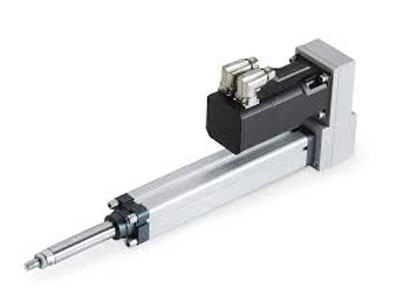What Does A Pneumatic System Do?
Key Takeaway
A pneumatic system uses compressed air or gas to power and control the movement of mechanical components. It enables functions like pushing, pulling, lifting, or holding objects with high speed and precision. These systems are widely used in manufacturing, automation, construction, and transportation because they are efficient and reliable.
The system works by compressing air using a compressor to generate energy. Valves control the flow and pressure of this compressed air, directing it to actuators, which produce linear or rotational motion. Pneumatic systems are cost-effective, easy to maintain, and capable of creating consistent motion. They can also utilize vacuum technology for applications like picking and moving objects. This makes pneumatic systems versatile and essential in various industries.
Understanding the Basics of Pneumatic Systems
A pneumatic system is a mechanism that uses compressed air to transmit energy and perform work. This energy is converted into mechanical motion, powering a wide range of applications, from simple tools to complex automation systems.
The core components of a pneumatic system include an air compressor, storage tanks, control valves, actuators, and pipelines. The air compressor generates the compressed air, which is then stored and distributed to various parts of the system as needed.
Pneumatic systems are valued for their simplicity and reliability. With fewer moving parts compared to hydraulic or electric systems, they are easy to maintain and operate. This makes them a preferred choice in industries where quick, repetitive motions and lightweight designs are essential.
Understanding the basics is the first step in appreciating how pneumatic systems drive automation and enhance productivity.

How Compressed Air Powers Pneumatic Systems
Compressed air is the lifeblood of pneumatic systems, providing the energy needed to perform mechanical work. The process begins with an air compressor that pressurizes ambient air. This compressed air is stored in tanks and released into the system through a network of pipelines and valves.
Once inside the actuator, the compressed air exerts force on a piston or diaphragm, converting the stored energy into motion. This motion can be linear, as seen in pneumatic cylinders, or rotary, as in pneumatic motors.
The efficiency of compressed air depends on its pressure and flow rate. Most pneumatic systems operate within a pressure range of 60 to 120 PSI, but the exact requirements vary depending on the application. Proper regulation of pressure ensures smooth and consistent operation.
Compressed air is not only a clean and abundant energy source but also highly adaptable. Engineers can easily adjust the pressure and flow to suit different tasks, making pneumatic systems versatile and efficient.
Key Functions of Pneumatic Systems in Automation
Pneumatic systems play a vital role in automation, performing key functions that streamline industrial processes. They are widely used for moving, clamping, lifting, and controlling machinery with precision and speed.
One of the primary functions is actuation. Pneumatic actuators convert compressed air into mechanical motion, powering tasks such as opening and closing valves, operating conveyor belts, and positioning components. Their rapid response time makes them ideal for high-speed automation.
Another critical function is control. Pneumatic systems regulate the flow of air and pressure to ensure consistent and accurate performance. This is particularly important in processes requiring precision, such as assembly lines or packaging systems.
Additionally, pneumatic systems enhance safety in automation. Unlike electric systems, they do not generate sparks, making them suitable for use in hazardous environments. Their lightweight design also reduces the risk of overloading machinery, ensuring smoother operations.
By enabling these functions, pneumatic systems contribute significantly to the efficiency and reliability of automated processes.
Applications of Pneumatic Systems in Industries
Pneumatic systems are integral to various industries, thanks to their versatility and efficiency. From manufacturing and construction to healthcare and transportation, they power essential operations across sectors.
In manufacturing, pneumatic systems drive machinery such as robotic arms, presses, and cutting tools. They are used in tasks like material handling, assembly, and packaging, where speed and precision are critical.
In construction, pneumatic tools such as jackhammers and nail guns rely on compressed air for power. These tools are lightweight, portable, and capable of performing heavy-duty tasks with ease.
The healthcare industry also benefits from pneumatic systems, using them in ventilators, patient beds, and laboratory equipment. Their clean and quiet operation makes them ideal for medical environments.
In transportation, pneumatic systems control braking mechanisms, suspension systems, and even automatic doors, ensuring safety and comfort.
These applications highlight the adaptability of pneumatic systems, making them a cornerstone of modern industry.
Advantages of Using Pneumatic Systems
Pneumatic systems offer several advantages that make them a preferred choice in many industrial applications. Their simplicity, reliability, and cost-effectiveness stand out as key benefits.
First, pneumatic systems are highly durable and require minimal maintenance. With fewer moving parts, they are less prone to wear and tear, reducing downtime and repair costs.
Second, they are safe and environmentally friendly. Compressed air is non-toxic and non-flammable, making pneumatic systems suitable for hazardous environments. Their clean operation ensures they can be used in industries with strict hygiene standards, such as food processing and healthcare.
Third, pneumatic systems are incredibly versatile. Engineers can easily adjust pressure and flow to perform a wide range of tasks, from delicate operations to heavy-duty applications.
Finally, their quick response times and lightweight design make them ideal for automation, enhancing productivity and efficiency in industrial settings.
By offering these advantages, pneumatic systems continue to play a crucial role in powering modern technology and automation.
Conclusion
Pneumatic systems are indispensable in automation, powering machinery and processes with precision and efficiency. From their reliance on compressed air to their applications across diverse industries, these systems demonstrate unmatched versatility and reliability.
For engineers, understanding the principles and functions of pneumatic systems is essential to optimizing their use. These systems are not just tools but enablers of innovation, driving advancements in industries worldwide.

